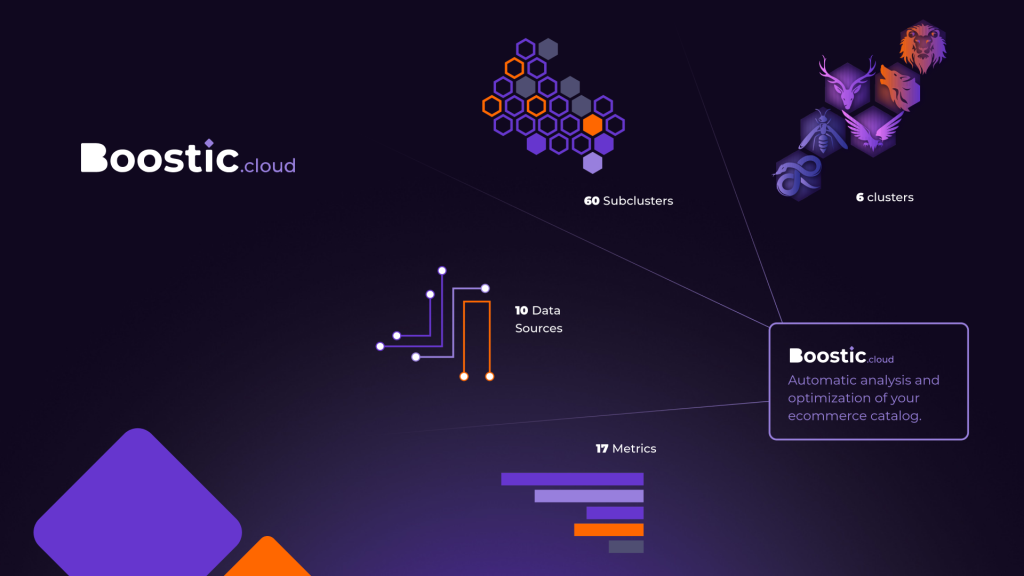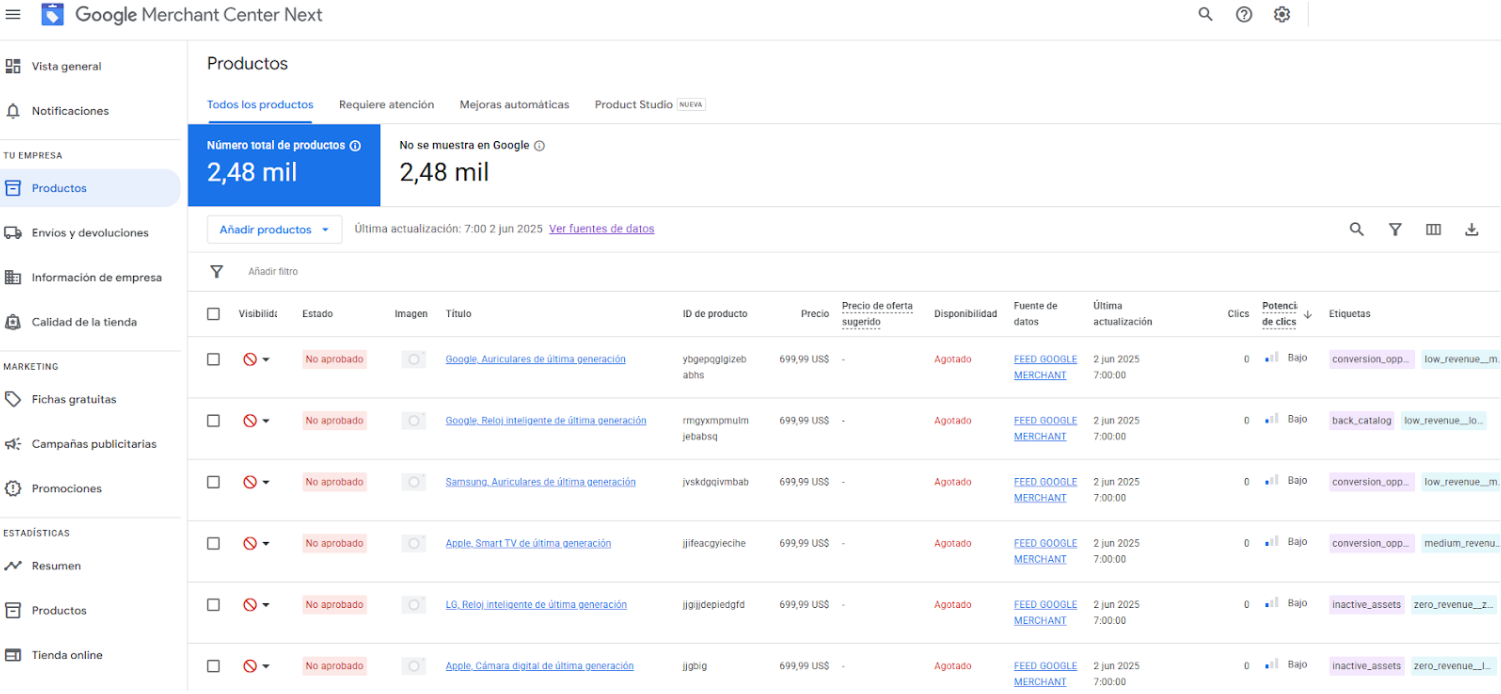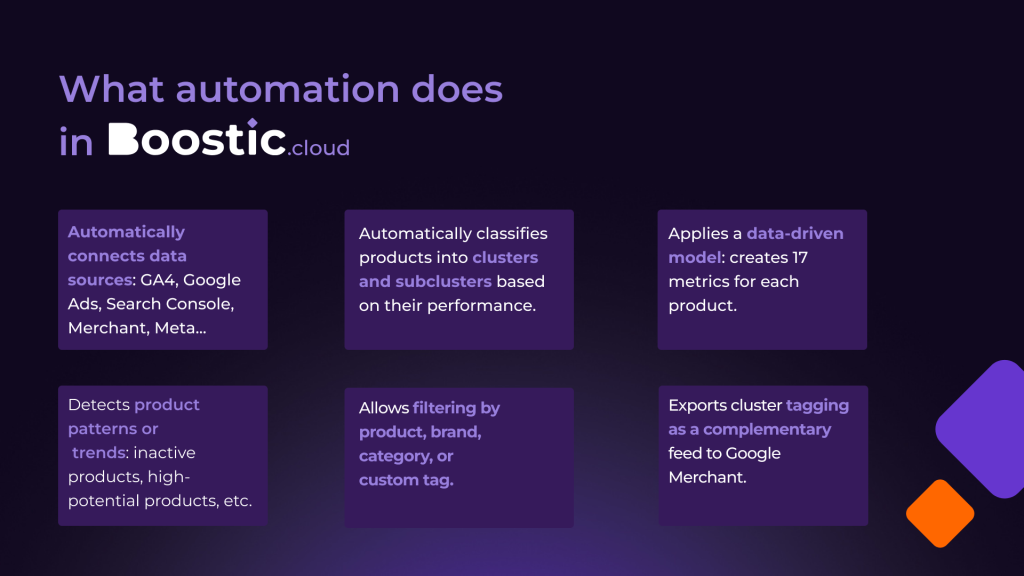
One of the biggest challenges we face in an e-commerce business with a large product catalog (hundreds, thousands, or even hundreds of thousands of products) is the automation of data analysis to know and understand the performance of different products, brands, and/or categories.
What might be simple with a catalog of 50 or 100 products becomes unmanageable once the catalog exceeds several hundred references. As a result, we either don’t analyze at the depth we’d like, or we have to dedicate an unreasonable number of hours to do so.
That changes with process automation. In this post, we’ll show you the keys and tools to help you save time without sacrificing the effectiveness of your strategy.
The BEFORE of product catalog analysis
Traditionally, in order to review product performance, you have to go to each data source separately (Google Ads, Google Analytics 4 (GA4), Meta Ads, etc.). Then, you need to gather the relevant information from each one, export it individually, and still cross-reference them to get a comprehensive view. This consumes a lot of time and resources.
But it doesn’t end there. Once the data analyst has collected the information, they need to create the key metrics they consider necessary and define the appropriate formulas to establish the evaluation criteria—with all the potential for human error that this entails.
On top of that, they must manually tag products to determine whether or not they meet certain conditions for evaluating their performance. Later, they have to repeat this entire process regularly in order to monitor what’s happening with the catalog and the effectiveness of the actions and strategies applied.
This entire workflow, which requires the team to manually cross-check information, is a slow and error-prone process. Especially as the number of products and campaigns grows, it quickly becomes unsustainable.
The AFTER of product catalog analysis: Automation as a lifeline for your ecommerce
To free up all this time and allow professional data analysis teams to focus on executing and applying strategy, Boostic.cloud comes into play.
What’s the key advantage this tool offers? It automates the entire process and allows you to focus on what truly matters: analyzing your catalog’s performance. Thanks to this, you can quickly identify high-performing products and take timely action on those that are underperforming.
How does Boostic.cloud automate the analysis of your ecommerce catalog?
With Boostic.cloud, you get a complete view of your catalog’s performance in a single suite. The platform automatically analyzes each product, classifying them into smart clusters so you can instantly identify the opportunities for each one.
This way, you save countless hours of manual work and can start making strategic decisions from day one. Boostic.cloud is the ideal tool for scaling large ecommerce catalogs (hundreds, thousands, or even hundreds of thousands of products) and optimizing their profitability.
Managing a catalog of this scale can be very costly (manual analysis is estimated to take between 20 and 40 hours). To reduce this to just seconds, Boostic.cloud integrates all your data sources into the platform, giving you access to SEO, SEM, sales/returns data, and more. All in one place.

How does Boostic.cloud achieve data analysis automation?
What Boostic.cloud does to automate catalog analysis is generate a data-driven performance model for each product based on integrated data sources.
It calculates 17 performance metrics (clicks, impressions, etc.) for each product and automatically classifies them into the appropriate cluster and subcluster. This allows products to be grouped into “packages” based on performance (in SEM or SEO), so that products with similar results are grouped together and can be managed using the same strategies and actions.
In addition, Boostic.cloud provides detailed insights for each product, making it easy to discover trends that would otherwise be difficult to detect.
Beyond that, Boostic.cloud allows you to export this product categorization to Google Merchant and Meta via a complementary feed. This enables Paid Media teams to use product performance data to prioritize and segment ad spend across different catalog-based advertising platforms.
Finally, Boostic.cloud also allows you to run detailed analysis by product, brand, category, or custom tags. All of this enables automatic categorization that turns into valuable insights, which can be used, for example, in future Google Ads campaigns.

Therefore, unlike other tools, Boostic.cloud provides a suite that allows you to manage and analyze large product catalogs automatically.
This will save you time and help avoid potential mistakes, becoming an essential resource for ecommerce businesses that want to identify hidden opportunities and optimize their product catalog analysis more efficiently.

If you want to learn more about Boostic.cloud, see how it integrates with your ecommerce, and discover how it can help you focus your time, request a demo here.


